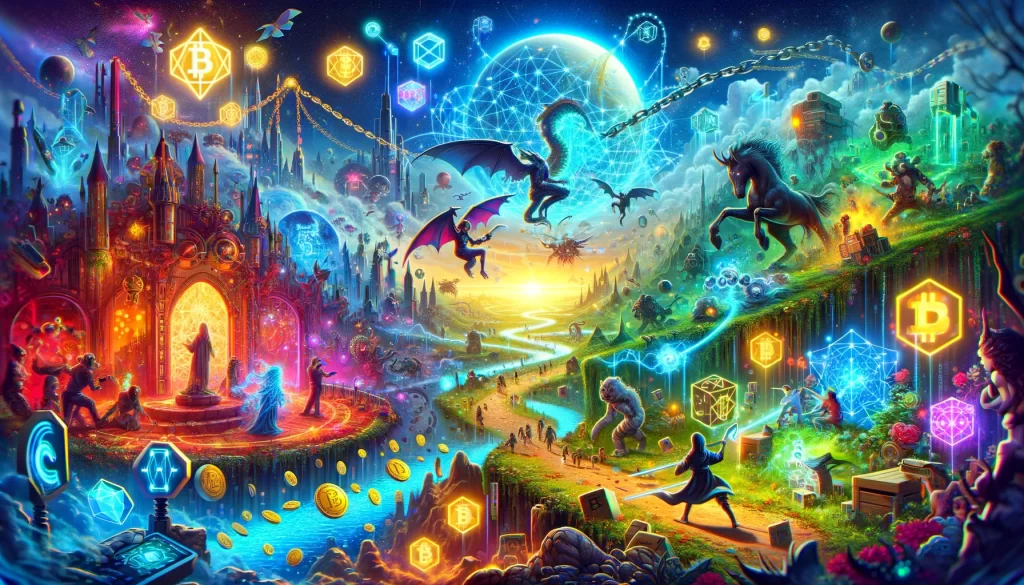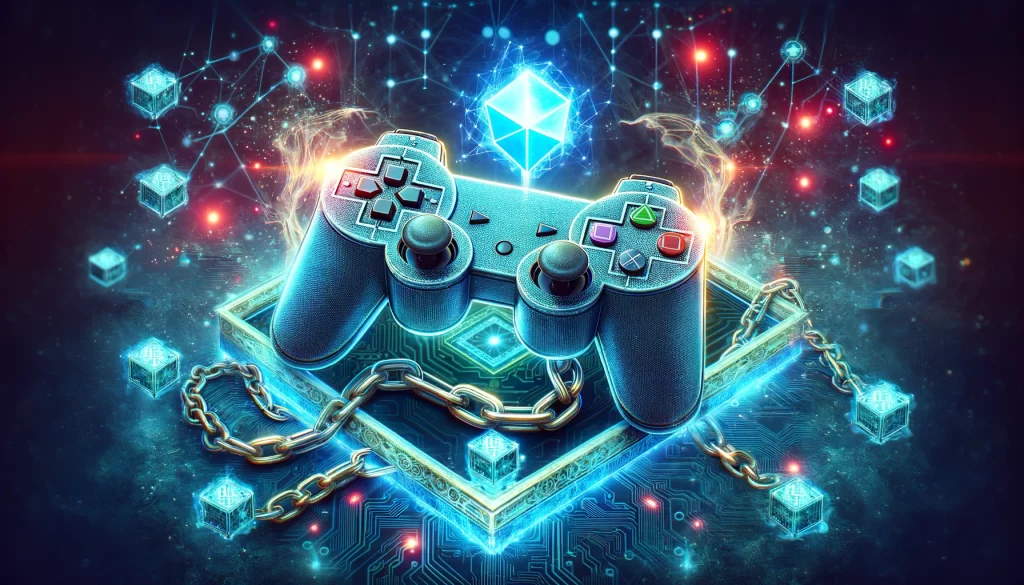Table of Contents
GameFi, an innovative fusion of gaming and finance powered by blockchain technology, is transforming the gaming industry by integrating economic incentives into play-to-earn models.
This emerging domain allows players to earn cryptocurrency and non-fungible token NFT rewards through gameplay, competitions, and progression within various games. The concept has attracted significant attention for its potential to redefine player engagement and ownership in the digital realm.
The Evolution and Current Landscape of GameFi
In 2023, GameFi experienced remarkable growth, with certain platforms seeing exponential increases in user engagement.
Sweat Economy emerged as a leader, boasting the highest number of daily active users among Web3 games by November.
Additionally, new entrants like Pixels on Ronin and BLCR on Polygon demonstrated strong growth, underscoring the expanding diversity and appeal of GameFi platforms.
Farming and mining games have dominated the GameFi genre, attracting the largest player base. This is followed by card games and move-to-earn (M2E) games, indicating a varied interest among the gaming community.
However, the metaverse genre has declined, suggesting shifting preferences and the dynamic nature of player engagement within the GameFi ecosystem.
Technological and Blockchain Integration
The most active blockchain for Web3 gaming in 2023 was Skale, attributed to its gasless transactions that lower entry barriers for new players.
The shift of platforms such as Pixels from Polygon to Ronin significantly increased Ronin’s activity, highlighting the impact of strategic migrations on network dynamics. Despite these advancements, generalized blockchains like Solana and BNB Smart Chain still host a smaller share of blockchain gaming activities, mainly due to their broader use cases beyond gaming.
Challenges and Future Prospects
Despite its growth, GameFi faces challenges, particularly regarding its reputation and the quality of games. Critics argue that many blockchain-based games prioritize financial mechanics over engaging gameplay, leading to perceptions of GameFi as play-to-work rather than play-to-earn.
However, anticipation is building around upcoming titles that promise to blend high-quality gaming experiences with blockchain’s innovative features, potentially changing these perceptions.

Integrating advanced technologies such as artificial intelligence (AI) and digital twin technologies offers a path for crypto games to enhance its appeal and functionality. These technologies could enable a seamless fusion of finance and immersive gaming experiences, paving the way for a more mature and engaging GameFi ecosystem.
Conclusion
As Crypto Gaming continues to evolve, it stands at a critical juncture. Its ability to overcome current challenges and integrate cutting-edge technology will determine its place in the gaming industry’s future. With potential game-changers on the horizon and a growing interest in blockchain’s capabilities, GameFi could redefine what it means to play and earn in the digital age.
The journey of GameFi into 2024 and beyond will be one to watch as it endeavors to balance innovation with the core joys of gaming, aiming to capture the hearts of traditional and Web3 gamers alike.

